- Home
- Tom Clancy
Battle Ready Page 26
Battle Ready Read online
Page 26
Another agreement that didn’t work out was the protection arrangement for Saddam’s eight lavish palaces in the region. We had approved a plan that allowed the Iraqis to retain military security over the palaces; but when an Iraqi unit guarding one of them opened fire on a British Royal Marine patrol, the Marines blasted the Iraqis; and that ended the agreement.
Saddam’s private airfield at Sirsenk was turned into a logistics base for our operations. Our troops made pen sets from its black marble wall panels and passed them out “Compliments of Saddam.”
At one point, I went out to see one of the palaces. It was still under construction, occupying the top of an imposing hill; and it was massive—like a fairy-tale castle. Luxurious villas were scattered down the hillside; and water pumped up to the top flowed down the side of the hill in a system of water-falls. Underneath the hilltop castle was a vast tunnel complex. At first, we thought this may have been for WMD storage; but it turned out to be for something like a casino. It was shocking to see these grand structures in the midst of the poverty of the local population.
During the same trip, I visited the villages that had been gassed by the Iraqis in 1988 . . . a chilling sight. They were not only empty of people, but the Iraqis had left not one stone upon another. The Kurds who’d made their homes there had asked to return; but when we did soil tests, we found dangerous toxic chemical traces that made return impossible.
THE HUMANITARIAN aspects of the operation were of course its primary focus. Except for our Civil Affairs officers, this was a new experience for most of us; and it led to many coordination problems.
When the NGOs started showing up, most of them had had no experience working with us, we had had no experience working with them, and there was mutual suspicion.52 They were all wonderful, well-meaning humanitarians; but they all seemed to think they could do their own thing without much coordination with the common effort: NGO planes would suddenly show up in our airspace demanding landing permission, unable to understand why we had a hard time accommodating them.
To minimize these problems, we established a Civil-Military Operations Center (CMOC) under Civil Affairs control to coordinate with the NGOs, DART, and the UNHCR. Though friction between the military and the relief agencies continued (on a much smaller scale), the CMOC provided an excellent forum to work out the problems. EUCOM established a Civil Agency Response Element (CARE) at their headquarters that helped a great deal to sort out problems at the Unified Command and Washington levels.
In spite of our mutual problems, working with the NGOs and the various government agencies like DART and the Centers for Disease Control was not at all a bad experience. I learned a lot from the teams advising us. Each of them provided valuable lessons in their specialty areas (water, food, medical care, etc.) that I would use later in missions of this sort.
From the CDC I learned about the nature of diseases—the cycle, the causes, and the treatment . . . the conditions that lead to them, the signs that diseases are spreading, and what you have to do to prevent that. This was a totally unique experience . . . and it’s not an instrument you normally find in the military tool kit.
Cholera, for example, is difficult to cure—especially in the case of children. The kids will initially seem to be improving, but they’re really not. They’ll look like they’re getting better; then they’ll sink down; then they seem to be getting a little better; and then they sink down a little more. The process is really a gradual decline, but you’ll find upswings that give you hope. The upswings can fool you.
I also learned a lot from the teams sent in by Médecins Sans Frontières (Doctors Without Borders). They are not only fine doctors; they are also culturally sophisticated in dealing with refugees and third world peoples. They had serious concerns about the level of care we were providing.
The Kurds needed a great deal of medical help instantly. To fill that need, we brought in what we had—technically advanced military medical units and field hospitals. (I observed a major operation at a Belgian field hospital, where they were doing elective surgery. It was a world-class facility.) Our idea was to come in and lay down a massive effort . . . really flood the place. But when we pulled out, we’d leave a tremendous void. That is, we were bringing in a level of care that couldn’t be maintained after we left.
By way of contrast: when Doctors Without Borders work within a third world environment, they try to leave something behind that can be maintained. It’s the old idea: You just don’t hand people fish, you try to leave the skill of fishing behind. They know how to leave the skill behind far better than we in the military do. And I took many lessons from this which I used later in Somalia and elsewhere.
RETURNING REFUGEES to their country of origin was no simple task. The large number of international laws and regulations created to safeguard the rights of refugees generate a large administrative and technical burden. This was the first operation at this level of civil-military coordination; and many lessons learned emerged that would be useful in future operations. For example, I had never known before that there’s a difference between “displaced persons” within borders and “refugees.” Each class has rights, but the rights of displaced people are not the same as the rights of refugees.
Processing all that took a great deal of our time and energy; but it was all necessary. You assume all these people want to go home; but that assumption is not totally correct. Some Kurds did not want to go back. Some were simply too paralyzed with fear to move. We knew they couldn’t stay in the hills. But we couldn’t just herd them into trucks and carry them wherever we thought it best to take them. We had to convince them we would protect them and take care of them before we could get their agreement. It was not easy.
Every single Kurd had to have written documentation spelling out that they weren’t going home under duress and that they understood what they were doing. Forms had to be filled out for each Kurd, and somebody had to fill them. That meant Potter’s guys in the camps had to interview every adult among the 500,000 Kurds and take care of all the necessary paperwork.
Later, each Kurd had to be continuously accounted for—where they started from, where they were at that particular moment, where they would end up. We set up a transit system with checkpoints, way stations, and the like, to keep track of everybody; but of course things didn’t work out the way we planned. Some of the Kurds moved out without telling anybody . . . just took their donkeys or whatever and went back down the trails. We were losing count. “My God,” Shali told me one day, “I’ve lost 100,000 Kurds. Where have they gone?” We sent recon airplanes to find out, but we didn’t have much luck with that. The Kurds had simply scattered into the hills. We had to trust that they knew their way home.
Over the course of Operation Provide Comfort, eight tasks had evolved for the CTF (and the operative word here is evolved):
1. Provide immediate relief and stabilize the population in place.
2. Build a distribution system/infrastructure for continuous logistics support.
3. Establish a Security Zone in northern Iraq.
4. Construct temporary facilities, i.e., transit centers, way stations, support centers, etc.
5. Transfer the refugee population to the temporary sites.
6. Transition the humanitarian operation to the international relief organizations.
7. Provide continuous security for all aspects of the operation.
8. Enable the ultimate return of the refugees to their homes.
The mission was continually changing. We didn’t just get instructions up front, look at the expected end state, and go and do it. We were probing our way through every stage—often thinking when we reached one stage that we were at the end state. But then we’d see other paths opening that we’d have to follow. Once we’d stabilized the refugees in the hills, we realized we had to move them out of the hills; then we realized we had to put them in a sustainable area; then we realized we had to bring them home; then we realized we had to protect them fr
om the Iraqis. Tasks emerged from other tasks. We were developing them as we went. And we had no idea what the end state would be until we got there.
By mid-June, the Kurds were back in their homes, and we were able to withdraw our ground forces back to Turkey. There we established a temporary base for a ground reaction force just inside the border at a town called Silopi. Though humanitarian airlift missions were no longer required, continuous combat air patrols were maintained over the Kurdish areas, and the MCC remained in the Security Zone. The ground troops left Silopi in July.
On July 24, Provide Comfort I ended and Provide Comfort II began. General Shalikashvilli returned to USAREUR, Jim Jamerson resumed command, and I went back to being the deputy. With the ground troops gone, Provide Comfort became an air operation again. Only the MCC and a CSAR capability remained on the ground.
Now that the air operations had transformed into combat patrols, and the Rules of Engagement gave only Jim Jamerson and me authority to order certain responses to Iraqi threats, Jim felt that I needed greater familiarity with air operations. I was not only thoroughly briefed, but I was taken on a flight in a two-seater F-16 to get a hands-on feel for what the pilots faced. And since we had an aircraft carrier in support, I also flew in a Navy A-6—including a series of catapult shots and traps aboard the carrier. This valuable experience served me well in future joint tours of duty.
Later, when Jamerson left and Brigadier General Glenn Profitt took command, I was asked by General Galvin to stay on to provide continuity.
I finally returned to EUCOM in November.
Provide Comfort evolved into Operation Northern Watch, and continued on for well over a decade until Operation Iraqi Freedom in 2003.
OPERATION PROVIDE HOPE
By the end of 1991, it was becoming increasingly evident to Secretary of State Baker that the New World Order was not happening. The twelve republics that had split off from the former Soviet Union—many of them nuclear-armed—were not going to blossom painlessly into democracies and free-market economies. That much-desired outcome faced serious obstacles. Baker concluded that achieving world stability required helping the FSU recover by means of a new international Marshall Plan.
This was a gigantic undertaking, with many uncertainties: Could the U.S. muster the international community, use NATO, bring in the Japanese and other developed nations, and get the necessary resources? And then, how would this undertaking be received in the FSU itself?
Baker’s vision was to jump-start this post-Cold War Marshall Plan by means of a humanitarian airlift of food, medicine, and other supplies to the republics of the FSU. The operation, called “Provide Hope,” was conducted by the U.S. military during January and February of 1992. Once that was under way, Baker hoped other countries would join the effort. He foresaw down the road not just a humanitarian gesture but a follow-up international effort to reconstruct the economies and political systems of the FSU, to encourage investment, to provide the technical expertise needed to bring them up to international standards, and to show them how to operate in the international community.
The project was headed up by Ambassador Rich Armitage; Congress approved $100 million for the initial effort.
Though the natural inclination of the military is to avoid getting tangled up in such projects, Generals Galvin and McCarthy jumped on the effort right away. It obviously fitted in with Galvin’s long-standing inclinations. He saw the importance of supporting Provide Hope, yet it was far from clear how EUCOM would help.
Early in January, the decision was made to keep the Provide Comfort Crisis Action Team going, with a focus on Provide Hope; and a meeting was held at EUCOM headquarters to decide what else to do. Someone obviously had to link up with Ambassador Armitage and find that out.
Tony Zinni got the call.
General McCarthy turned to Zinni: “We’re not sure what this is all about, but it looks like a very good thing, and EUCOM needs to be a big part of it. Rich Armitage is in Bonn [on a trip to solicit European assistance]. Get up there and tell him you’re there to support him. Figure out what he needs and go make that happen.”
To Zinni, these are the assignments he loves best—missions that nobody knows how to define or execute; and you go out with what are called mission-type orders: “Go get it done.”
When Zinni arrived in Bonn, Armitage was holding a meeting with German and U.S. officials at the U.S. Embassy. During a break, he was ushered into the conference room to meet Armitage.
Armitage, a Naval Academy graduate and later a Navy SEAL, had had a long history in Vietnam both in combat and working for the State Department. In a long career in government, he had been an Assistant Secretary in the Department of Defense, and then an ambassador-at-large—a troubleshooter. In that capacity, he had brought acceptable settlements to a number of knotty negotiations, such as the Philippine bases contract. All the recent Republican administrations have used him as their frontline troubleshooter . . . the man who can handle the really tough jobs, get done what has to get done, no matter what it takes. He has had vast experience both at the Pentagon and in the State Department. (He became Deputy Secretary of State under Colin Powell.)
Armitage is a big, powerfully built man, blunt, forceful, to the point, and easily intimidating to those susceptible to intimidation. He does not tolerate fools or people who waste his time, and he doesn’t tolerate a lot of idle brainstorming. He knows where he wants to go; he wants to see what people can do, not what they can say. At the same time, he’s a very smooth and savvy operator on the playing fields of Washington, with fine-tuned political instincts. He makes few wrong moves.
Zinni took an instant liking to him. All his instincts told him he and this hard-driving diplomat would work well together.
But Armitage was not thrilled when he was introduced to the Marine brigadier general from EUCOM. He was polite enough, but his expression said, “Who the hell are you? And what do you want?”
“I’m on orders from EUCOM to report to you,” Zinni said, “and get you any military support you need. I’m here to help you.”
“I’m not sure I need your help,” Armitage answered suspiciously, with an expression that was even less encouraging. His long familiarity with the military—always wary of nonmilitary missions like his—had made him skeptical of generals bearing gifts. It was more than likely that Zinni had been sent to keep an eye on him, and to make sure he didn’t tap into military assets.
Armitage knew he did not need EUCOM, and he made that instantly clear (though without saying so directly). His mission was from the Secretary of State; that is, from a level several notches above EUCOM. And Colin Powell was one of his best friends (and remains so). As far as he was concerned, Zinni—and EUCOM—were probably obstructions rather than solutions. “Who needs EUCOM? I can blow EUCOM away and get whatever I need.”
Zinni quietly pressed his case: “General Galvin is totally sincere. He did not send me to sabotage Provide Hope, but to offer you everything we have on a silver platter. We want to help you get this thing off the ground.
“Believe me,” he assured Armitage, “I have both General Galvin’s and General McCarthy’s ear: You will get what you want.”
After a time, Armitage softened into a “Well, we’ll see” attitude. That was enough for Zinni.
Back at EUCOM, General McCarthy set up a joint task force (under a special outfit in the Crisis Action Team) to carry out the airlift mission. The JTF was commanded by Brigadier General Jim Hobson, USAF, who had also worked with Zinni on Operation Provide Comfort, and it was composed of U.S. Air Force airlift units—a logistics component to move, stage, handle, and pack the supplies; a psychological operations unit to translate the instructions on how to properly use the relief supplies provided and convey our messages of cooperation; an information bureau to handle the public relations aspects; and the On-Site Inspection Agency (OSIA), which was tasked to provide advance contact and coordination at the delivery locations.
Though OSIA’
s mission was normally arms control verification, their capabilities (language, small-team deployability to remote sites, etc.) made them ideal for this task. Many airlift delivery locations were in places U.S. aircraft had never flown into—remote airfields where there was little or no information about fuel availability, field conditions, and navigational aids. The OSIA teams made their way to these locations a week in advance, made the contacts on the ground for handling the supplies, and passed on all the necessary information by means of satellite communications.
The U.S. Transportation Command (TRANSCOM) supported the operation; EUCOM established a Special Projects Team in their command center to run it; and a Disaster Assistance Response Team from the Office of Foreign Disaster Assistance joined the effort.
The relief supplies themselves came from Cold War stocks, prepositioned in Italy, the Netherlands, and Germany—food, medicine, blankets, and medical supplies—much of it in storage since the 1950s. EUCOM units gathered these up and moved them in a massive series of airlifts to places they had never seen before—Dushambe, Almaty, Tashkent, Kiev, Bishket, Baku, and other remote spots in the FSU.
Meanwhile, Armitage’s team watched over the JTF, visited countries and organizations in NATO and the European Union (to gain participation and support for the follow-on efforts), and traveled to the various republics of the FSU (to establish contact with local officials, coordinate future activities, and make assessments of needs). Secretary of State Baker chaired a multination donors’ conference in Washington to solicit support and resources for the long-term effort.
Secretary Baker kicked off the operation in a ceremony at Rhine-Main on January 23, 1992.

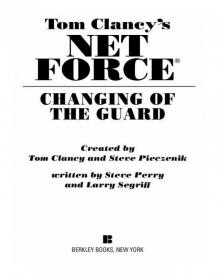 Changing of the Guard
Changing of the Guard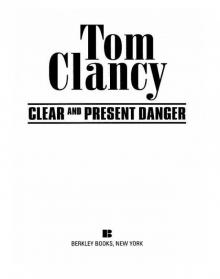 Clear and Present Danger
Clear and Present Danger Hounds of Rome
Hounds of Rome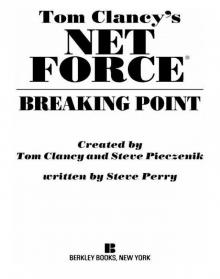 Breaking Point
Breaking Point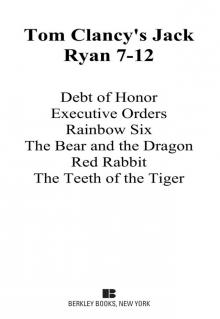 Tom Clancy's Jack Ryan Books 7-12
Tom Clancy's Jack Ryan Books 7-12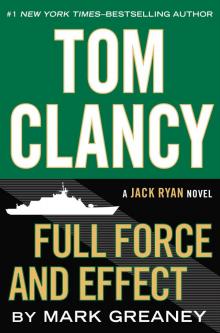 Full Force and Effect
Full Force and Effect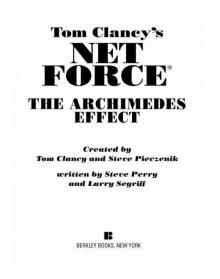 The Archimedes Effect
The Archimedes Effect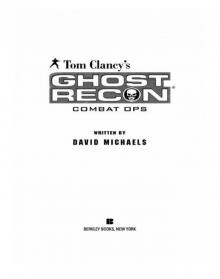 Combat Ops
Combat Ops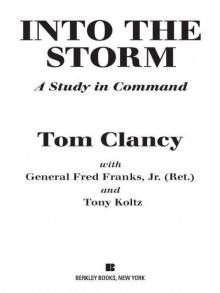 Into the Storm: On the Ground in Iraq
Into the Storm: On the Ground in Iraq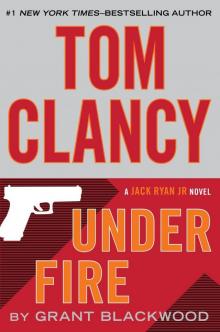 Under Fire
Under Fire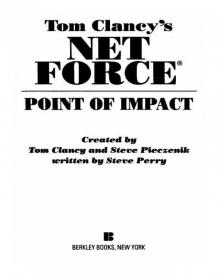 Point of Impact
Point of Impact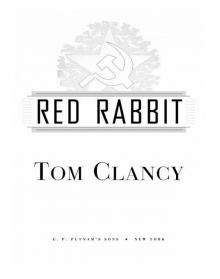 Red Rabbit
Red Rabbit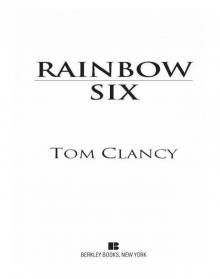 Rainbow Six
Rainbow Six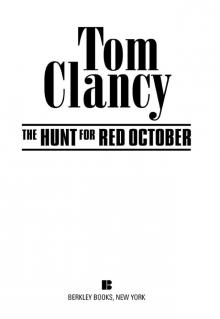 The Hunt for Red October
The Hunt for Red October The Teeth of the Tiger
The Teeth of the Tiger Conviction (2009)
Conviction (2009)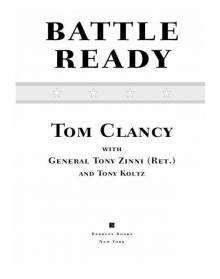 Battle Ready
Battle Ready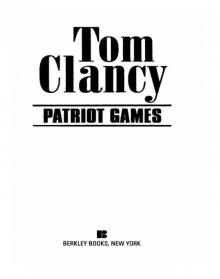 Patriot Games
Patriot Games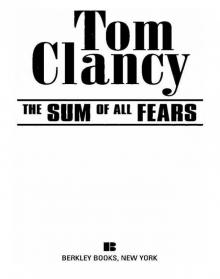 The Sum of All Fears
The Sum of All Fears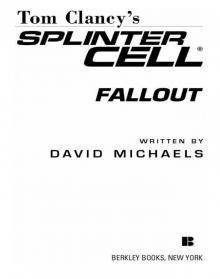 Fallout (2007)
Fallout (2007)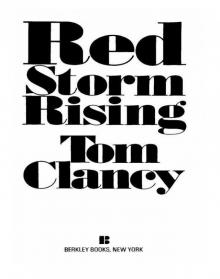 Red Storm Rising
Red Storm Rising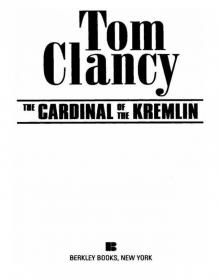 The Cardinal of the Kremlin
The Cardinal of the Kremlin Executive Orders
Executive Orders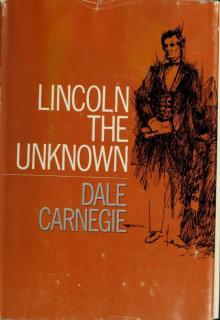 Lincoln, the unknown
Lincoln, the unknown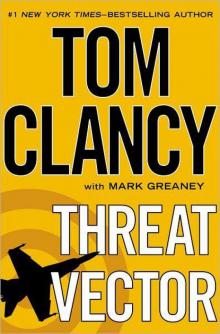 Threat Vector
Threat Vector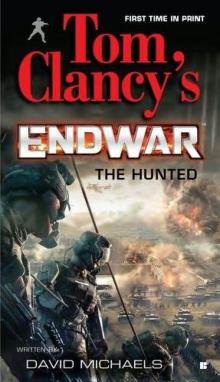 The Hunted
The Hunted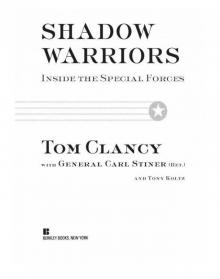 Shadow Warriors: Inside the Special Forces
Shadow Warriors: Inside the Special Forces End Game
End Game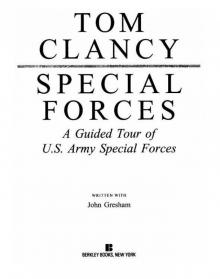 Special Forces: A Guided Tour of U.S. Army Special Forces
Special Forces: A Guided Tour of U.S. Army Special Forces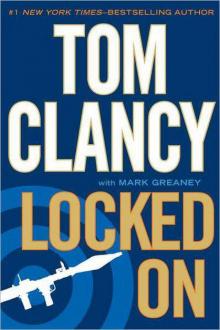 Locked On
Locked On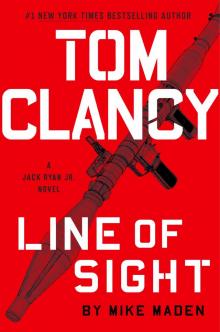 Line of Sight
Line of Sight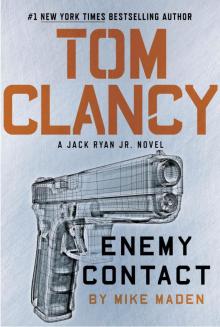 Tom Clancy Enemy Contact - Mike Maden
Tom Clancy Enemy Contact - Mike Maden Fighter Wing: A Guided Tour of an Air Force Combat Wing
Fighter Wing: A Guided Tour of an Air Force Combat Wing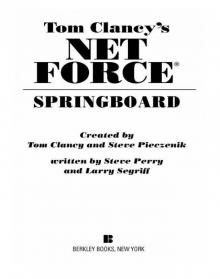 Springboard
Springboard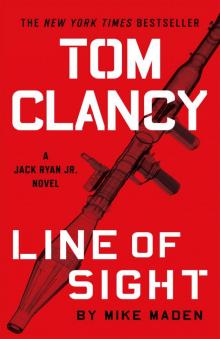 Line of Sight - Mike Maden
Line of Sight - Mike Maden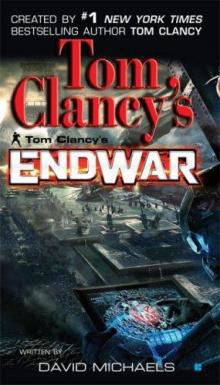 EndWar
EndWar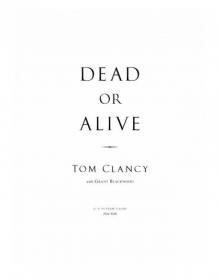 Dead or Alive
Dead or Alive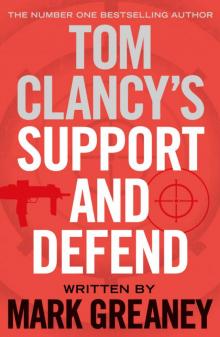 Tom Clancy Support and Defend
Tom Clancy Support and Defend Checkmate
Checkmate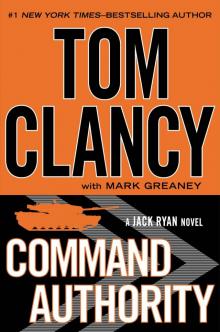 Command Authority
Command Authority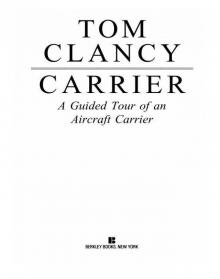 Carrier: A Guided Tour of an Aircraft Carrier
Carrier: A Guided Tour of an Aircraft Carrier Blacklist Aftermath
Blacklist Aftermath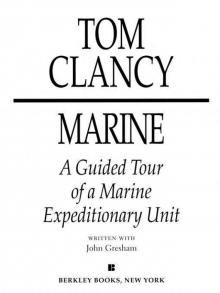 Marine: A Guided Tour of a Marine Expeditionary Unit
Marine: A Guided Tour of a Marine Expeditionary Unit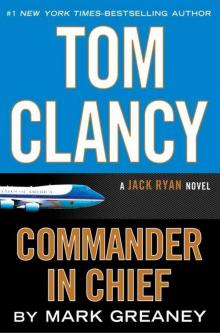 Commander-In-Chief
Commander-In-Chief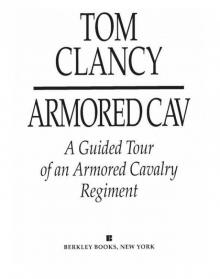 Armored Cav: A Guided Tour of an Armored Cavalry Regiment
Armored Cav: A Guided Tour of an Armored Cavalry Regiment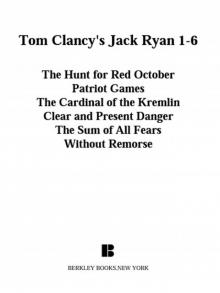 Tom Clancy's Jack Ryan Books 1-6
Tom Clancy's Jack Ryan Books 1-6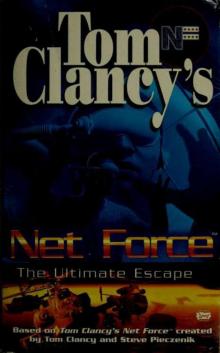 The Ultimate Escape
The Ultimate Escape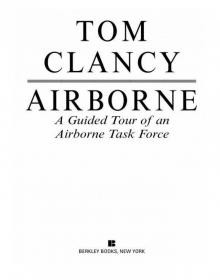 Airborne: A Guided Tour of an Airborne Task Force
Airborne: A Guided Tour of an Airborne Task Force Debt of Honor
Debt of Honor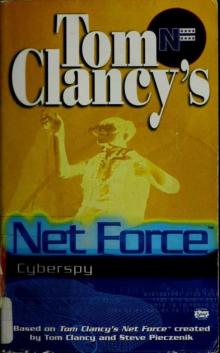 Cyberspy
Cyberspy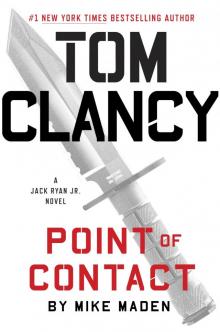 Point of Contact
Point of Contact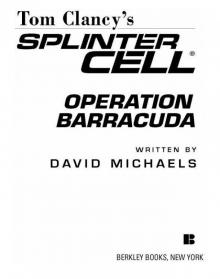 Operation Barracuda (2005)
Operation Barracuda (2005)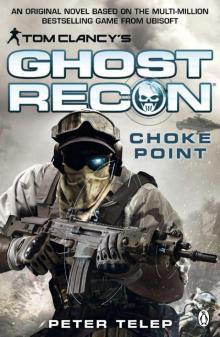 Choke Point
Choke Point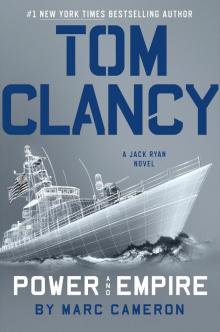 Power and Empire
Power and Empire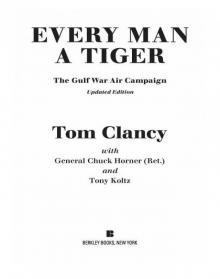 Every Man a Tiger: The Gulf War Air Campaign
Every Man a Tiger: The Gulf War Air Campaign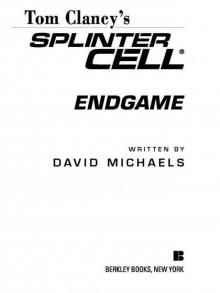 Endgame (1998)
Endgame (1998)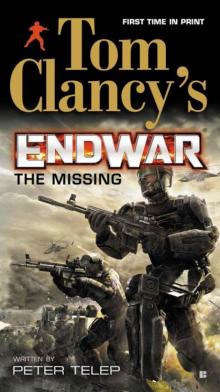 EndWar: The Missing
EndWar: The Missing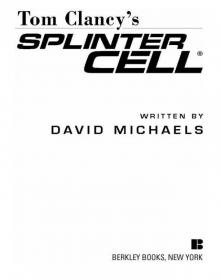 Splinter Cell (2004)
Splinter Cell (2004)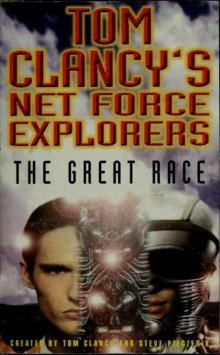 The Great Race
The Great Race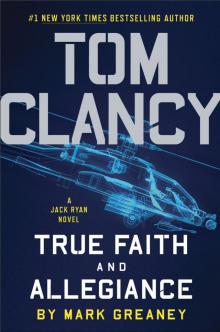 True Faith and Allegiance
True Faith and Allegiance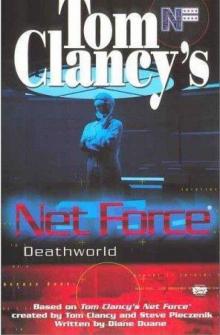 Deathworld
Deathworld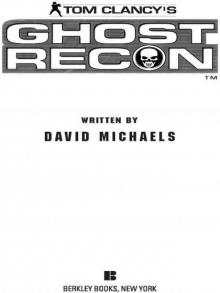 Ghost Recon (2008)
Ghost Recon (2008)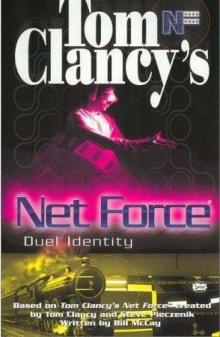 Duel Identity
Duel Identity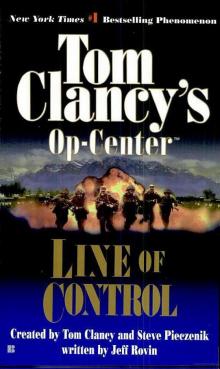 Line of Control o-8
Line of Control o-8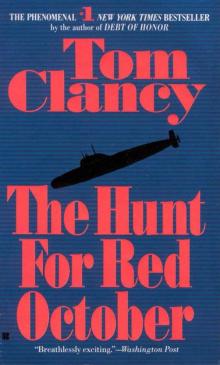 The Hunt for Red October jr-3
The Hunt for Red October jr-3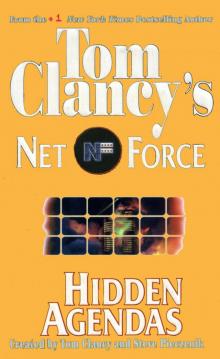 Hidden Agendas nf-2
Hidden Agendas nf-2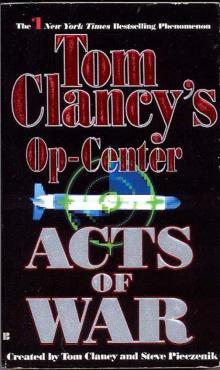 Acts of War oc-4
Acts of War oc-4 Ruthless.Com pp-2
Ruthless.Com pp-2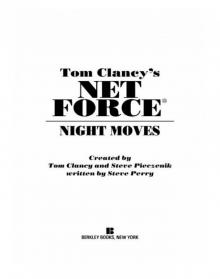 Night Moves
Night Moves The Hounds of Rome - Mystery of a Fugitive Priest
The Hounds of Rome - Mystery of a Fugitive Priest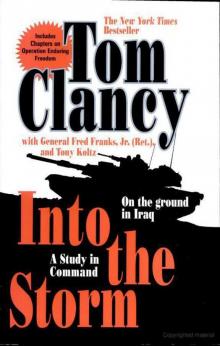 Into the Storm: On the Ground in Iraq sic-1
Into the Storm: On the Ground in Iraq sic-1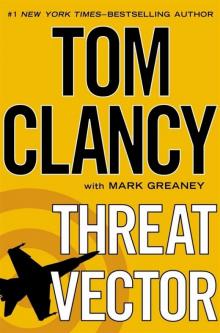 Threat Vector jrj-4
Threat Vector jrj-4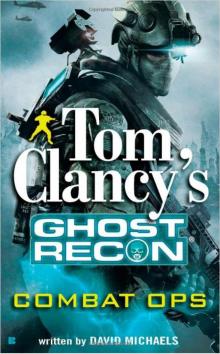 Combat Ops gr-2
Combat Ops gr-2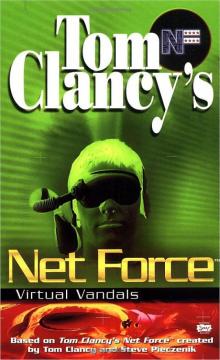 Virtual Vandals nfe-1
Virtual Vandals nfe-1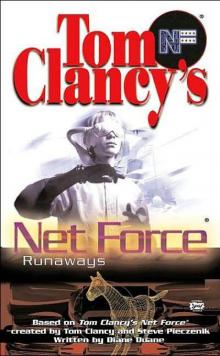 Runaways nfe-16
Runaways nfe-16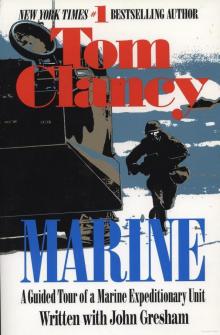 Marine: A Guided Tour of a Marine Expeditionary Unit tcml-4
Marine: A Guided Tour of a Marine Expeditionary Unit tcml-4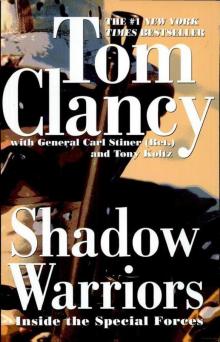 Shadow Warriors: Inside the Special Forces sic-3
Shadow Warriors: Inside the Special Forces sic-3 Jack Ryan Books 1-6
Jack Ryan Books 1-6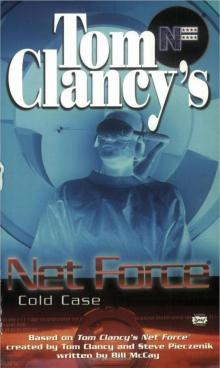 Cold Case nfe-15
Cold Case nfe-15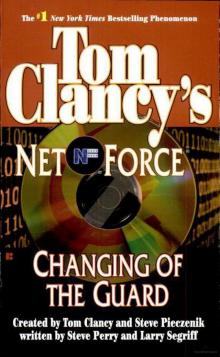 Changing of the Guard nf-8
Changing of the Guard nf-8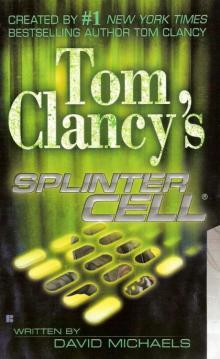 Splinter Cell sc-1
Splinter Cell sc-1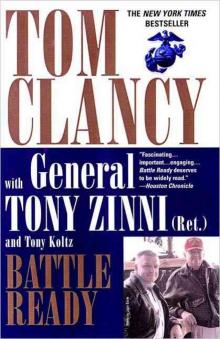 Battle Ready sic-4
Battle Ready sic-4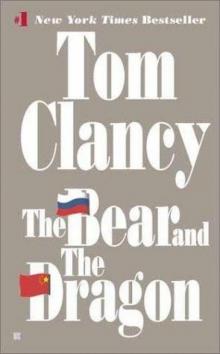 The Bear and the Dragon jrao-11
The Bear and the Dragon jrao-11 Fighter Wing: A Guided Tour of an Air Force Combat Wing tcml-3
Fighter Wing: A Guided Tour of an Air Force Combat Wing tcml-3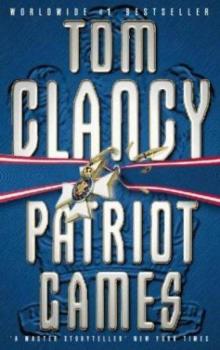 Patriot Games jr-1
Patriot Games jr-1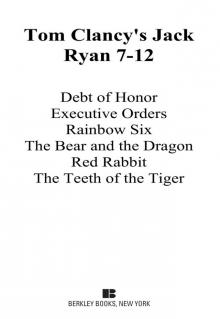 Jack Ryan Books 7-12
Jack Ryan Books 7-12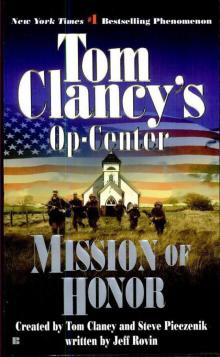 Mission of Honor o-9
Mission of Honor o-9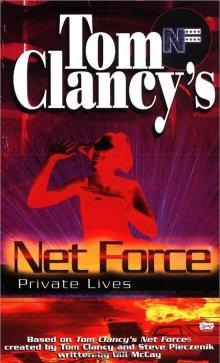 Private Lives nfe-9
Private Lives nfe-9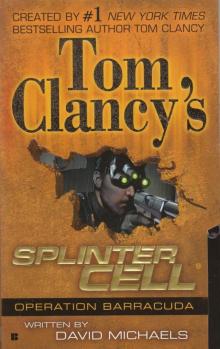 Operation Barracuda sc-2
Operation Barracuda sc-2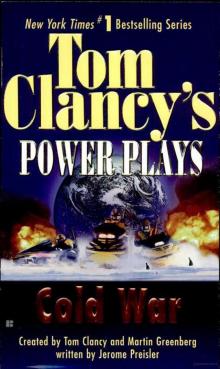 Cold War pp-5
Cold War pp-5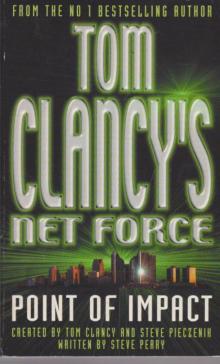 Point of Impact nf-5
Point of Impact nf-5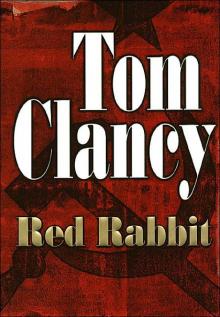 Red Rabbit jr-9
Red Rabbit jr-9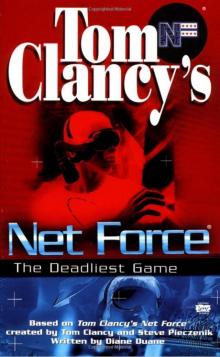 The Deadliest Game nfe-2
The Deadliest Game nfe-2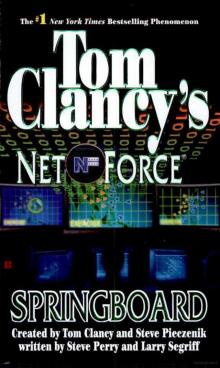 Springboard nf-9
Springboard nf-9 Safe House nfe-10
Safe House nfe-10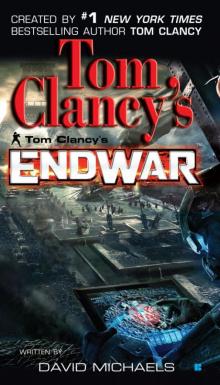 EndWar e-1
EndWar e-1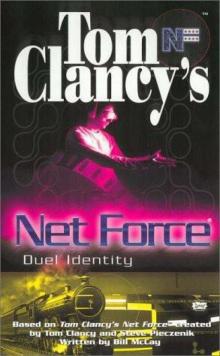 Duel Identity nfe-12
Duel Identity nfe-12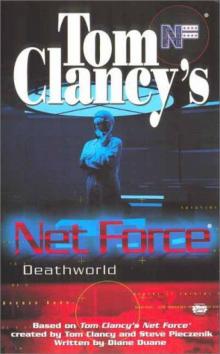 Deathworld nfe-13
Deathworld nfe-13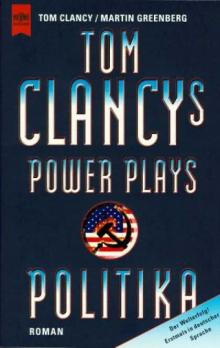 Politika pp-1
Politika pp-1 Rainbow Six jr-9
Rainbow Six jr-9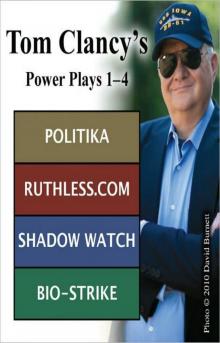 Tom Clancy's Power Plays 1 - 4
Tom Clancy's Power Plays 1 - 4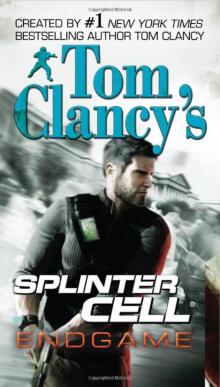 Endgame sc-6
Endgame sc-6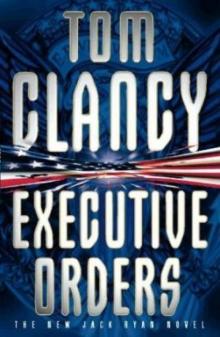 Executive Orders jr-7
Executive Orders jr-7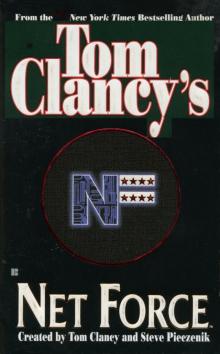 Net Force nf-1
Net Force nf-1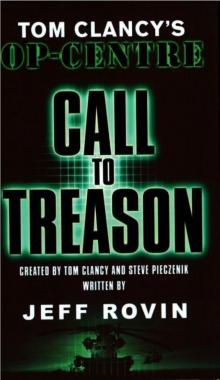 Call to Treason o-11
Call to Treason o-11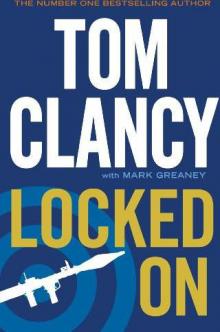 Locked On jrj-3
Locked On jrj-3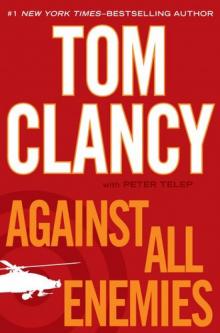 Against All Enemies
Against All Enemies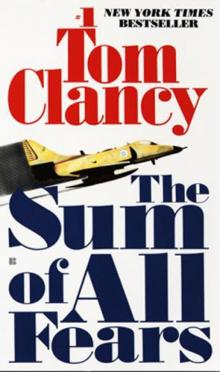 The Sum of All Fears jr-7
The Sum of All Fears jr-7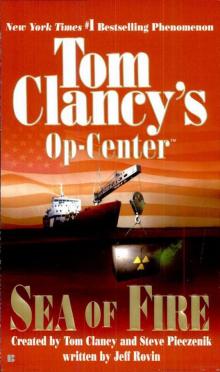 Sea of Fire o-10
Sea of Fire o-10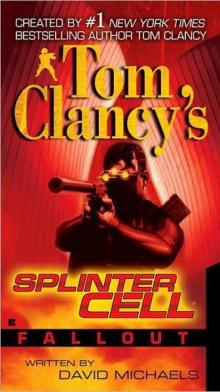 Fallout sc-4
Fallout sc-4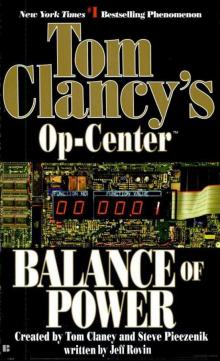 Balance of Power o-5
Balance of Power o-5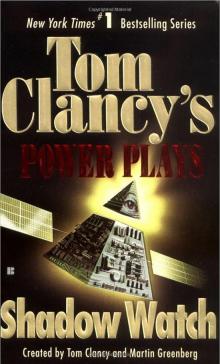 Shadow Watch pp-3
Shadow Watch pp-3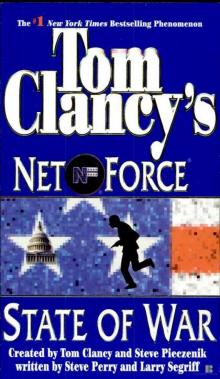 State of War nf-7
State of War nf-7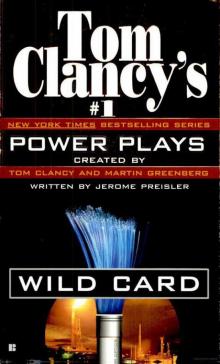 Wild Card pp-8
Wild Card pp-8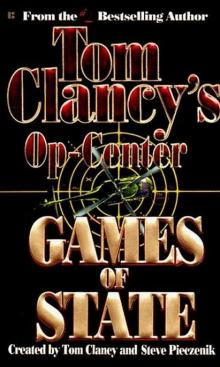 Games of State o-3
Games of State o-3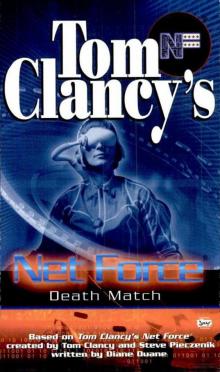 Death Match nfe-18
Death Match nfe-18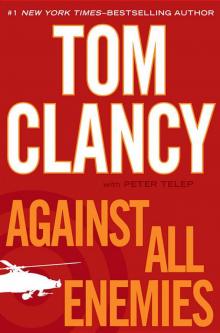 Against All Enemies mm-1
Against All Enemies mm-1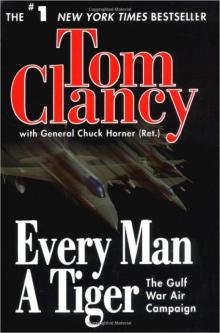 Every Man a Tiger: The Gulf War Air Campaign sic-2
Every Man a Tiger: The Gulf War Air Campaign sic-2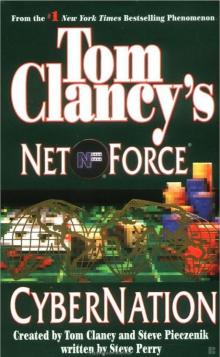 Cybernation nf-6
Cybernation nf-6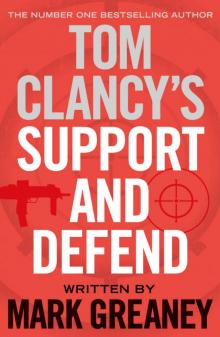 Support and Defend
Support and Defend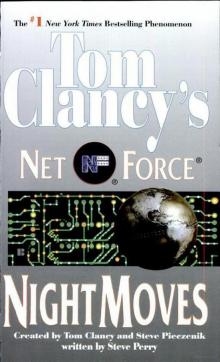 Night Moves nf-3
Night Moves nf-3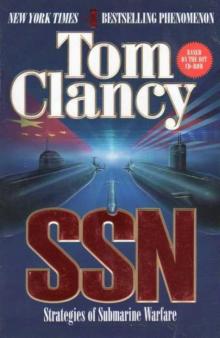 SSN
SSN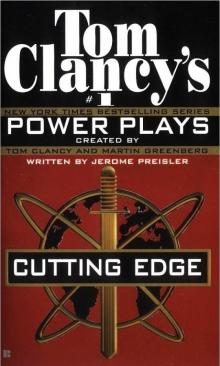 Cutting Edge pp-6
Cutting Edge pp-6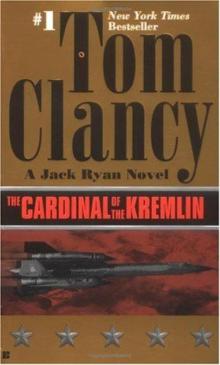 The Cardinal of the Kremlin jrao-5
The Cardinal of the Kremlin jrao-5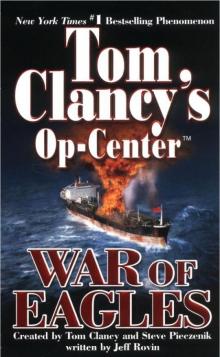 War of Eagles o-12
War of Eagles o-12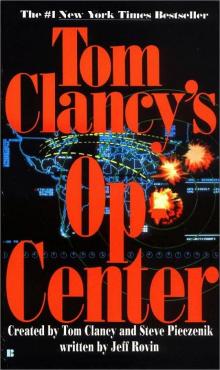 Op-Center o-1
Op-Center o-1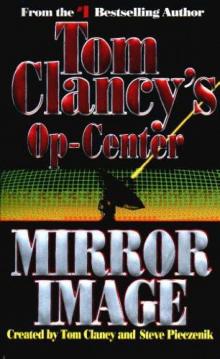 Mirror Image o-2
Mirror Image o-2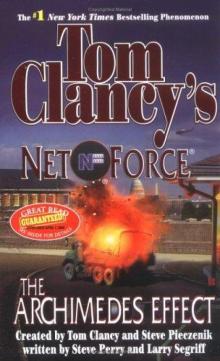 The Archimedes Effect nf-10
The Archimedes Effect nf-10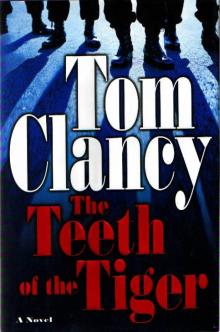 Teeth of the Tiger jrj-1
Teeth of the Tiger jrj-1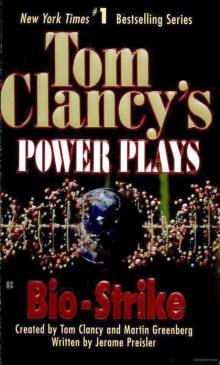 Bio-Strike pp-4
Bio-Strike pp-4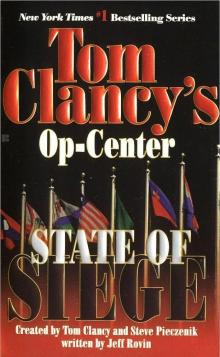 State of Siege o-6
State of Siege o-6 Debt of Honor jr-6
Debt of Honor jr-6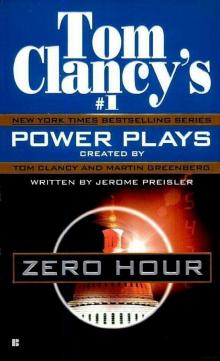 Zero Hour pp-7
Zero Hour pp-7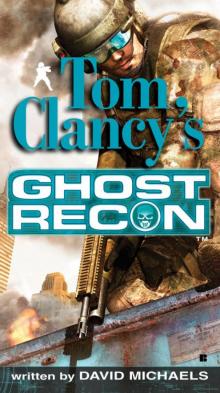 Ghost Recon gr-1
Ghost Recon gr-1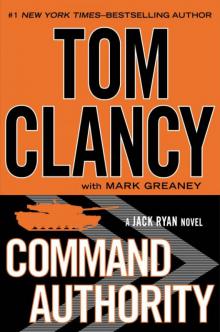 Command Authority jr-10
Command Authority jr-10 Tom Clancy's Power Plays 5 - 8
Tom Clancy's Power Plays 5 - 8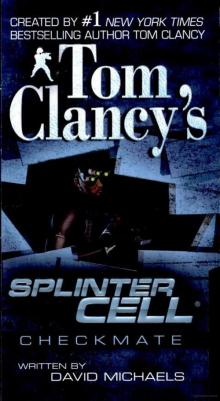 Checkmate sc-3
Checkmate sc-3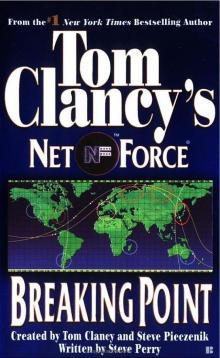 Breaking Point nf-4
Breaking Point nf-4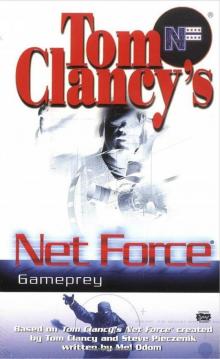 Gameprey nfe-11
Gameprey nfe-11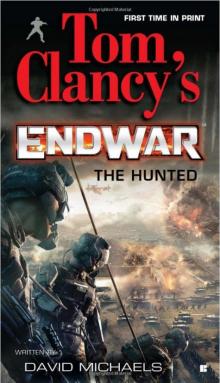 The Hunted e-2
The Hunted e-2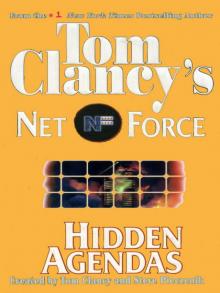 Hidden Agendas
Hidden Agendas Divide and Conquer o-7
Divide and Conquer o-7